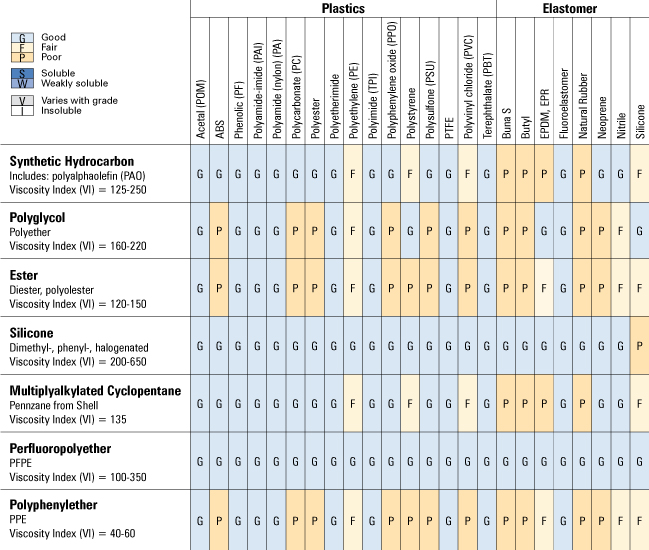Lubricants as a Key Design Component
Ideally lubricants should be selected and specified in conjunction with other design materials. In practice, however, lubricants are often added at the end of the design cycle. The result can be unexpected material incompatibility and premature failure.
Taking time upfront to specify a lubricant and ensure its compatibility with other materials pays off in the long run. Lubricant and material suppliers can offer compatibility guidance, but only component testing can provide real assurance. Why? A single category of elastomer, Nitrile, for example, can have as many as 100 possible formulations, each with different compatibility issues. So it is virtually impossible to make accurate, all-inclusive compatibility recommendations without actually testing a lubricant on a material.

When testing compatibility, materials should be exposed to lubricants under various temperatures, speeds and loads. For the most accurate evaluation of lubricant/material compatibility, test at the expected operating extremes. For further assurance, test materials of nearby components in case of oil migration or outgassing and condensation.
When the lubricant is set as a design priority, the need for re-lubrication can be limited or even eliminated. Wear can be greatly reduced, extending a product’s lifetime, and material incompatibility can be avoided — all of which increase quality and end-user satisfaction.
Related Technical Articles & White Papers
OPTICAL: Index Matching Gel & Mechanical Fiber Splice Technology for Last Mile FTTH
This paper directly addresses IMG performance concerns and offers a historical profile from both a manufacturing standpoint and an examination of industry applications.
Joe C. Brooks III
Read MoreSEMICONDUCTOR: Lubricants for Semiconductor Manufacturing Equipment
A primer on synthetic chemistries that explains why some lubricants are preferred for vacuum and cleanroom environments.
Read More


